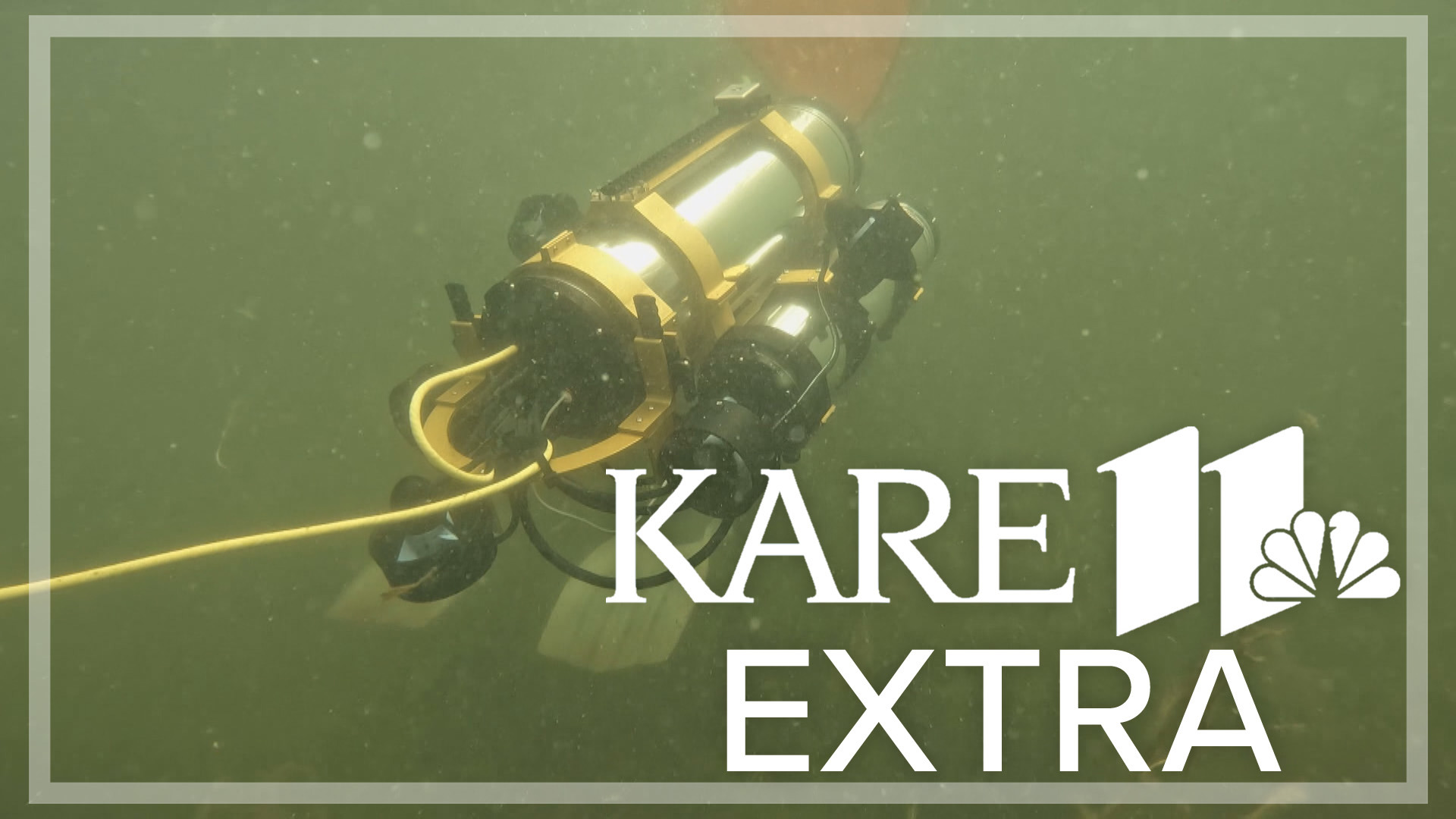WAYZATA, Minn. — Finding and solving water quality problems in the Land of 10,000 Lakes may soon have a new, lower-cost helper — an aquatic robot — that has been designed by and is undergoing tests at the University of Minnesota.
The autonomous underwater vehicle, which is named MeCO for Medium Cost Open Source Robot, costs under $10,000 to build versus more than 10 times that for a prebuilt machine. Open source means the design is out there for all, free of charge, offering multiple possibilities, including finding invasive species, inspecting ships and locating trash.
“So, all you need to do is buy the parts, look at the manual — assembly manual — build it, and run it,” said Dr. Junaed Sattar, who is leading the University of Minnesota research.
In late August, Sattar and his team set up on the Wayzata Beach and Marina to conduct a field test on the device’s autonomous abilities. The robot is a unique-looking device with three clear tubes that contain the electronic brains and guts. If viewing from one end, the tubes are stacked like firewood with two on the bottom and one on the top, in essence, forming a triangle. Multiple propellers are mounted on the device.
The robot can also even “see.”
While preparing on the beach, Dave Widhalm, student research lead, asks a teammate, “Want me to restart the camera?”
Grant Schwidder, an undergraduate computer science major, who is running a connected laptop, later notes, “OK, cameras are updating.”
Once the robot is ready, Sattar and Widhalm don scuba gear, so they can “play” with the robot under water. They will also be joined by a red target, which looks orange under water, that Widhalm will tow to see if the robot can find and follow.
“This is unique because it’s a diver’s buddy, as in, it does not only do autonomous behaviors; it also understands the humans that it’s working with,” Sattar said.
Think about that. For example, a diver could point, and the robot would respond.
But on this August day, in the autonomous test, the human-robot interaction is limited to Widhalm towing the target to see what the robot sees and does.
Aquatic robot a welcome possibility
Roughly an hour-and-a-half to the west of Lake Minnetonka on a New London lake, Jon Morales, program manager, Middle Fork Crow River Watershed District, who is doing his own water quality work in late August, is keenly interested in the aquatic robot testing.
“You can think of it as like sort of like a bloodhound or a heat-seeking drone,” Morales said.
Here on this stretch of the Middle Fork Crow River, Morales faces a water quality issue that he thinks could use the robot.
Annually, as ice leaves the river, a spring-only smell emerges, resulting from bacteria spending the winter gobbling river-bottom sediment that deposits above the New London dam.
“It smells. It smells pretty bad. So that hydrogen sulfide gas smells a lot like rotten eggs,” Morales said.
In exploring the annual odor, Morales collects data through a special probe and water samples at six locations — five of them monthly and one spot twice a month.
Still, under current methods, finding the odor-producing hot spots, which could ultimately lead to solutions, is tough.
“A better way would be amazing. You know this is a, it’s a time-consuming process. It’s tedious,” Morales said.
Aquatic robot success
Back on Lake Minnetonka on that late August day, it takes mere minutes for the divers to see that the robot successfully chased the target.
Widhalm emerges from the water, proclaiming, “Worked great,” later adding, “Followed me around the entire time.”
“That was awesome; super nice,” Sattar declared.
During such field tests, Sattar has people like Jon Morales in mind.
“This is robots making jobs easier and extending the capabilities of the field experts, so Jon is one of those people,” Sattar said.
In the big picture, Sattar and his research team’s aquatic robot holds tremendous promise for Minnesota’s 10,000 jewels.
“So, the hope would be that one day we can actually use this to clean up our lakes and keep them clean,” Widhalm said.

